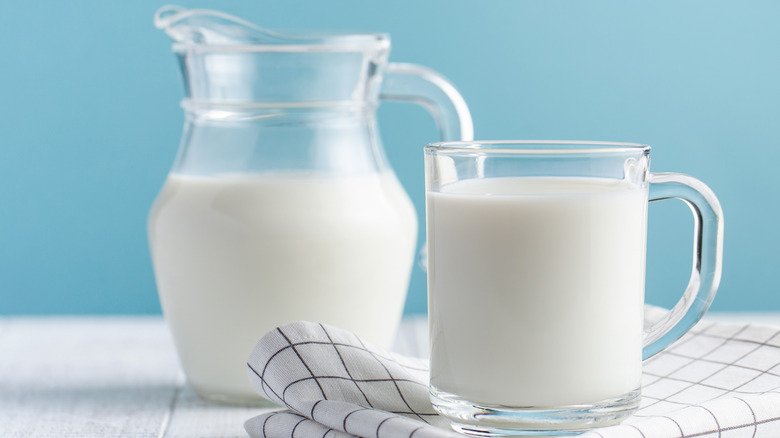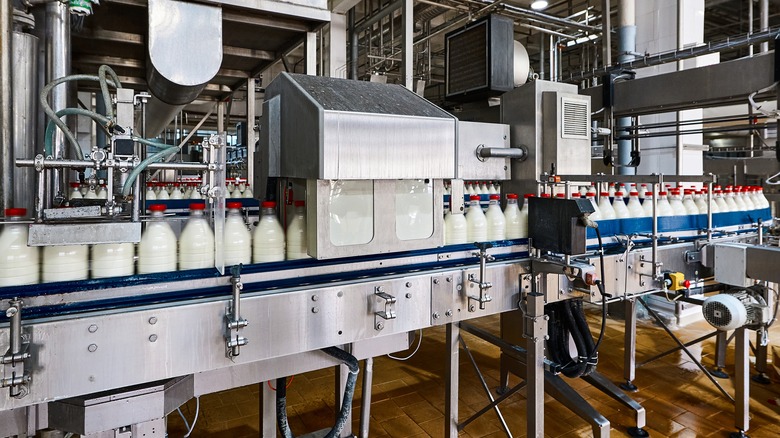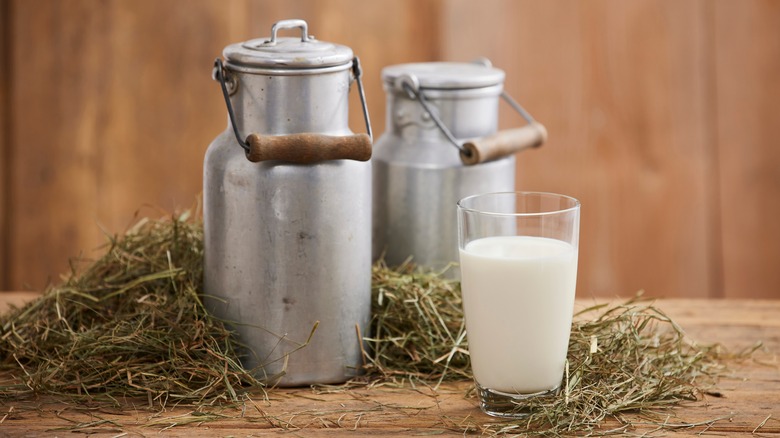What Is 'UHT' Milk (And Why Does It Last So Much Longer)?
Sometimes, a tall, ice-cold glass of milk is exactly the drink you need to wet your whistle. Whether you're using your milk to wash down a sandwich or as a receptacle for a dry cookie, it's important to make sure that it hasn't turned. Nothing is more disgusting than expired milk, which smells like sewage. You can tell that your milk has spoiled by testing your gallon for that smell, and also checking whether or not any chunks have formed in the milk.
Unfortunately, your milk can go bad much quicker than you might expect. The USDA tells us that an open container of milk should only be kept in the refrigerator for a week. Before this government guideline makes you fear for the fate of your future bowls of cereal, you should know that there is another kind of milk, which has a much longer shelf life by virtue of its painstaking pasteurization process.
The science behind UHT milk
Essentially, if you want to make sure that milk fresh from the cow is safe for consumption, you need to pasteurize it. By heating up the milk, you can kill any potentially dangerous pathogens that are swimming around inside of it. Unpasteurized milk, also known as raw milk, is banned in some parts of the U.S.
The most common pasteurization process in the modern United States is a high-temperature short-time or HTST pasteurization, wherein the milk is raised to a temperature of 161 degrees Fahrenheit for a brief moment before being quickly cooled back down. Milk has been ultra-pasteurized when it is heated to 280 degrees, which makes it stay fresh for longer.
However, the most sterile form of milk pasteurization is UHT or ultra-high temperature. Like ultra pasteurization, UHT pasteurization requires you to heat the milk to 280 degrees Fahrenheit. UHT pasteurization is a multistep process that involves heating milk and packing it into aseptic containers.
UHT milk sours at a shockingly slow rate
As the process involved in the pasteurization and packaging of ultra-high temperature milk is designed to ensure that it is completely sterile, it is a shelf-stable product, which means that it doesn't need to be refrigerated until you break its hermetic seal. In fact, you can leave a bottle of UHT milk out on the counter for months before it begins to go bad. By pasteurizing the milk at a temperature that is over 100 degrees Fahrenheit higher than the 161 degrees Fahrenheit reached by the standard high-temperature short-time pasteurization process, you can better ensure that even the most heat-resistant organisms are killed.
If you find yourself sipping on a tall glass of UHT milk, you might notice that it tastes slightly different than the milk that you're most familiar with. It has a richer flavor than regular mouth, with a boldness that almost makes it taste like it's been cooked. (Which, in a certain sense, it literally has). UHT milk only has a nutritional makeup that is marginally different from milk that was pasteurized using an alternative option – a small amount of a few vitamins and minerals dissipates during the heating process.


